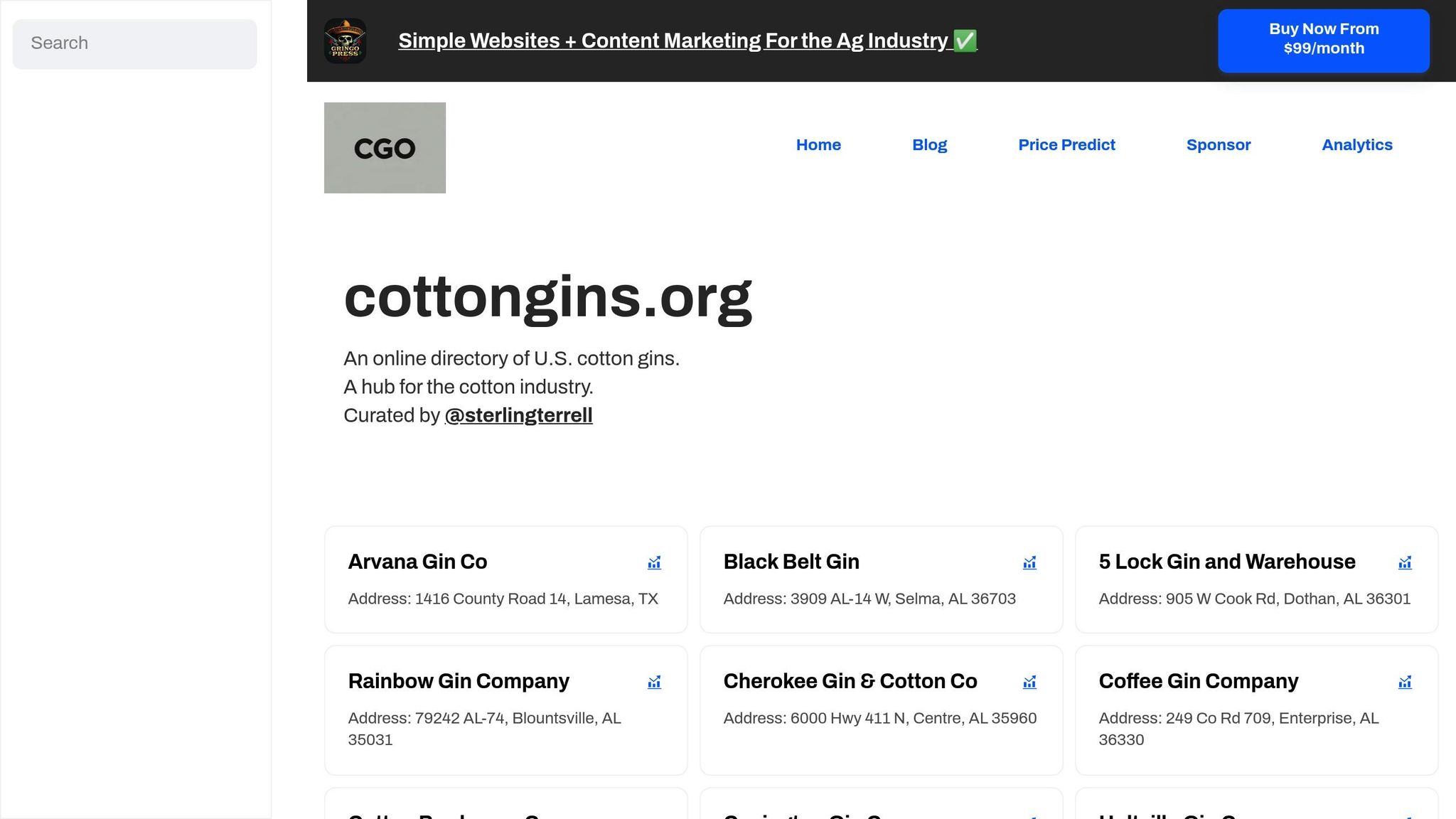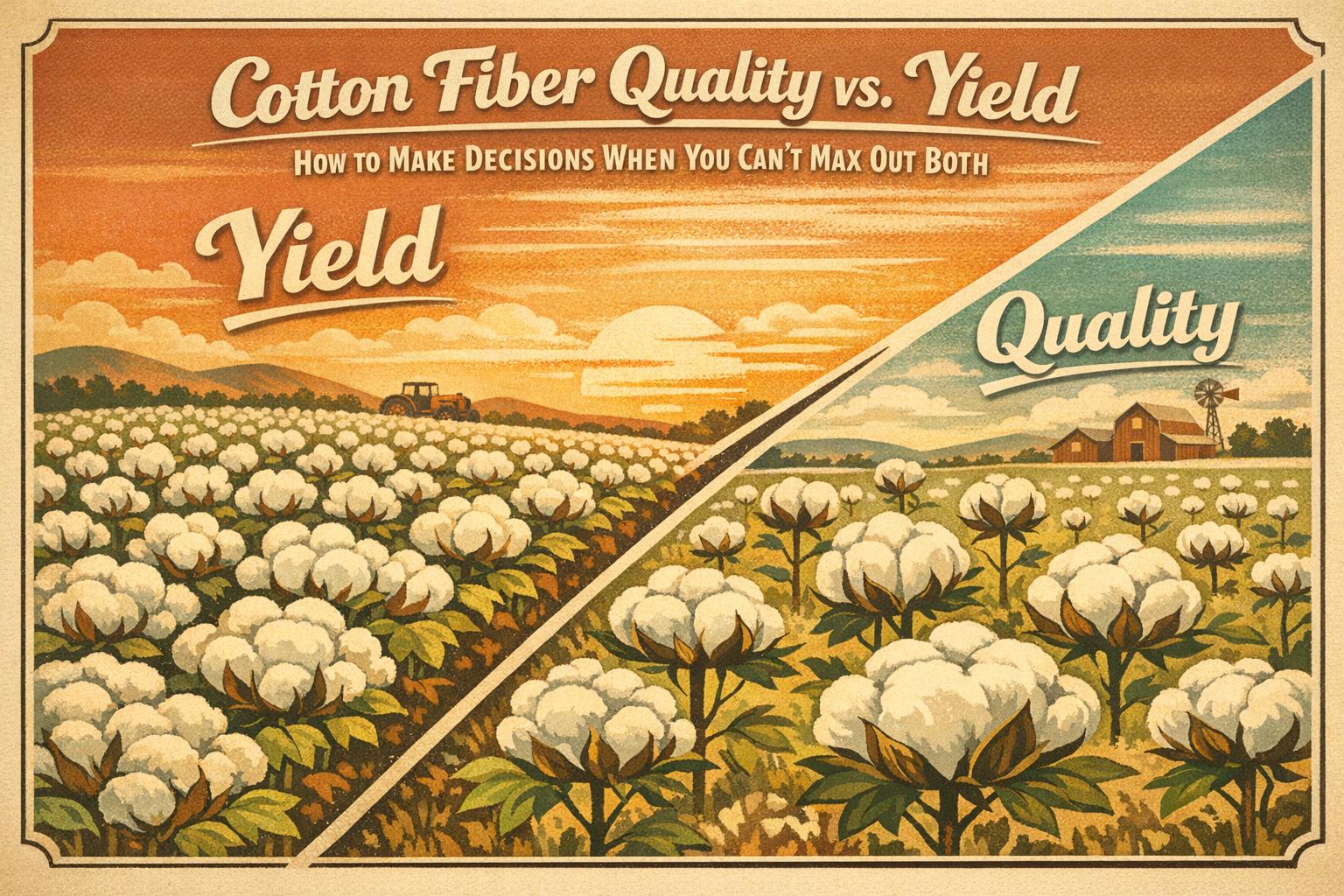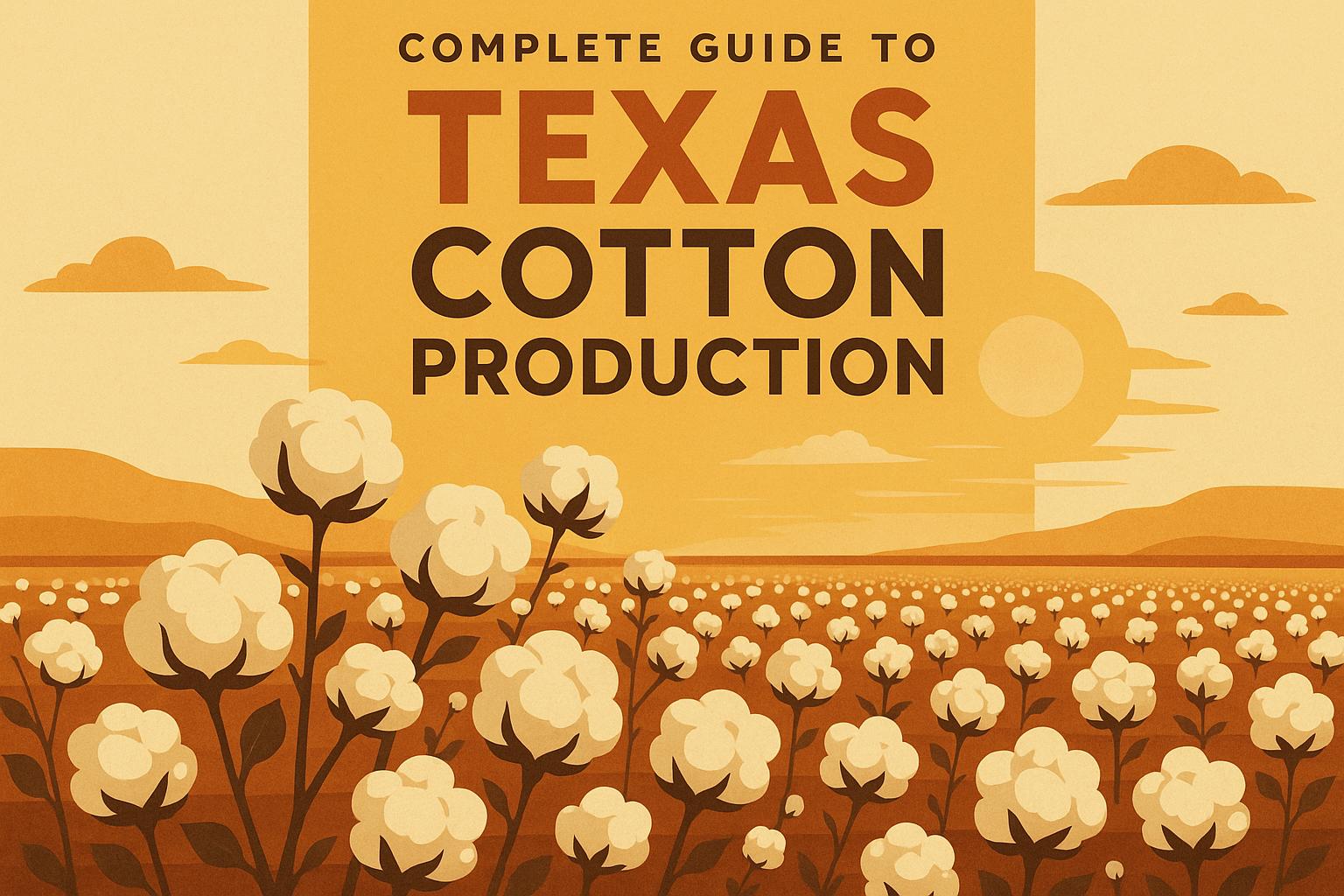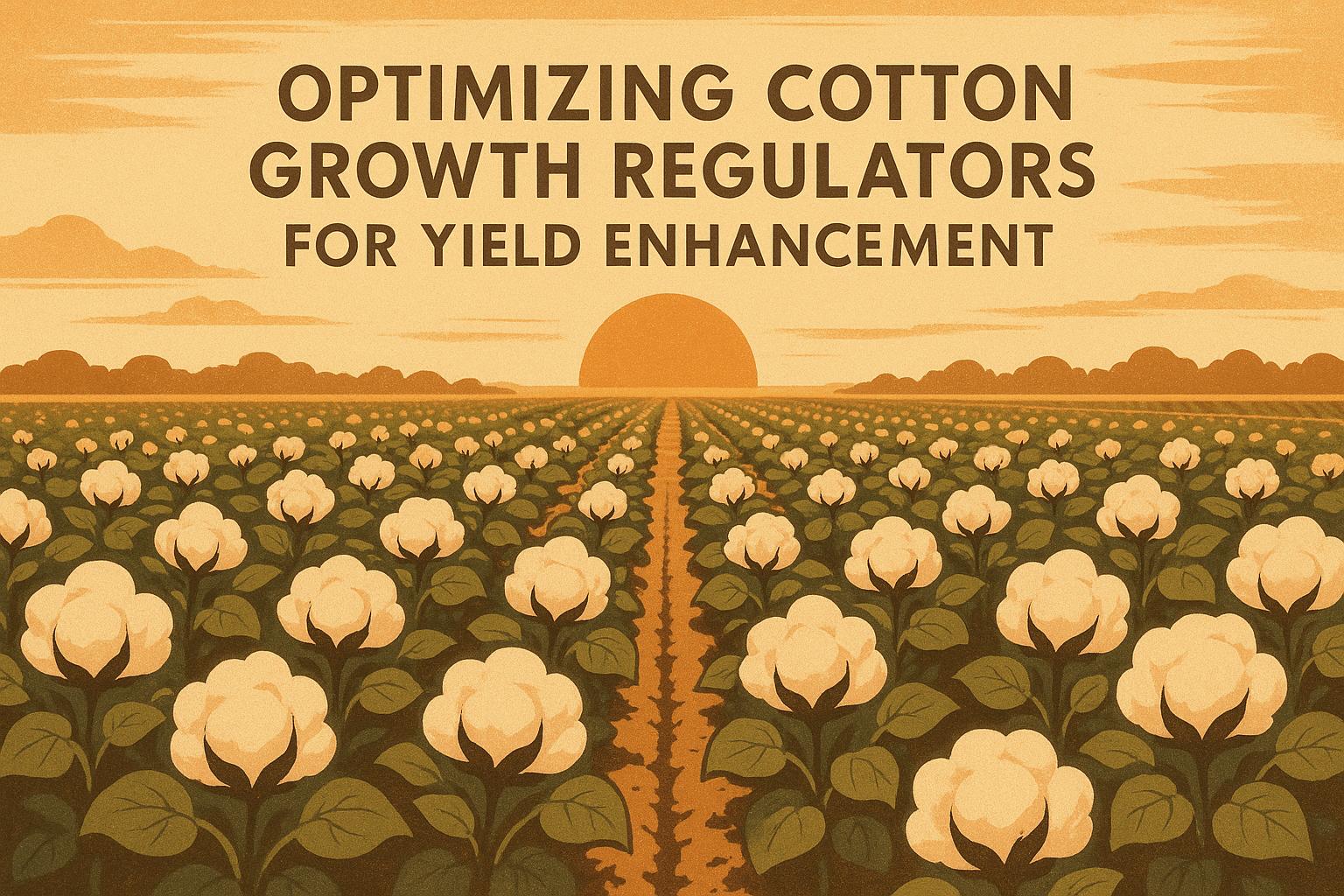The U.S. cotton gin market is heavily influenced by trade policies, which directly affect pricing, demand, and investment decisions. Key policies such as export subsidies, tariffs, and trade agreements play a major role in shaping the industry's dynamics. Here's what you need to know:
- Export Subsidies: These reduce costs for international buyers, driving up demand and increasing processing volumes at cotton gins.
- Tariffs: Import tariffs on U.S. cotton can lower export volumes, reducing processing needs domestically.
- Trade Agreements: Deals like the USMCA create stable trade conditions, boosting regional activity.
Regional trends show states like Texas, Georgia, and Mississippi investing in advanced equipment to meet growing export demands. However, challenges such as labor availability and shifting policies, like sustainability requirements and Farm Bill updates, could reshape the market. Operators are also adopting new technologies to meet international standards and stay competitive.
Staying updated on trade policies and leveraging tools like cottongins.org can help stakeholders navigate these changes effectively.
Impact of Tariffs On Cotton Producers
Regional Cotton Gin Market Trends
The U.S. cotton gin industry showcases distinct patterns across various regions, highlighting the need for operators to balance nationwide trends with local market conditions. These regional adjustments demonstrate how broad trade policies translate into specific operational strategies on the ground.
Growth and Modernization in Cotton Gin Markets
In several key regions, operators are upgrading equipment to meet increasing processing demands and take advantage of better export opportunities:
- Texas: Operators are investing in high-capacity systems to handle larger volumes, driven by favorable export conditions.
- Georgia: Automated systems are being adopted to enhance efficiency, lower labor costs, and improve fiber quality. These upgrades, paired with improved export logistics, are boosting access to international markets.
- Mississippi Delta: Advanced cleaning systems and computerized controls are being installed to meet international quality standards.
- California (San Joaquin Valley): Operators face unique challenges as they process cotton varieties sensitive to shifts in global market access under new trade agreements.
- Arkansas: Facilities are increasing seasonal throughput to keep up with growing export demand.
Regional Differences in Market Dynamics
Beyond modernization, regional market dynamics reflect differences in infrastructure, labor conditions, and local policies. These factors play a crucial role in shaping how operators respond to trade policy changes.
For instance, some Texas facilities benefit from strong rail networks and proximity to Gulf Coast ports, allowing them to quickly adapt to export opportunities. Meanwhile, labor availability varies across regions, with some areas relying on seasonal labor for flexibility during peak periods, while others pivot toward automation to maintain consistent processing levels.
State-level initiatives, such as tax incentives for equipment upgrades or infrastructure improvements, further enhance competitiveness by complementing federal trade measures. Additionally, regional specializations have emerged: some facilities focus on producing premium fiber for export markets, while others prioritize high-volume processing to serve both domestic and international customers.
Seasonal capacity adjustments add another layer of complexity. In certain regions, operators extend their processing seasons to handle cotton from multiple growing areas, especially when favorable trade policies drive higher international demand. This adaptability is essential as operators navigate an evolving industry shaped by both long-term trends and shifting trade agreements.
The combination of regional infrastructure, labor dynamics, and federal policies will continue to shape investment and operational strategies across the U.S. cotton gin industry.
Trade Policies Affecting the U.S. Cotton Gin Industry
Federal and international trade policies play a pivotal role in shaping the landscape for U.S. cotton gin operators. These policies set the stage for market conditions, influence investment decisions, and guide strategic planning across the industry.
Export Subsidies and Their Role in Market Competitiveness
Export subsidies are a key factor in boosting the global competitiveness of U.S. cotton. By lowering costs for international buyers, these subsidies not only make U.S. cotton more attractive abroad but also drive up domestic processing activity. The result is a positive shift in pricing dynamics that benefits both producers and processors.
Tariffs and Trade Agreements: Navigating Challenges and Opportunities
Tariffs and trade agreements create a mixed bag of challenges and opportunities for the cotton industry. Changes in tariff structures or modifications to trade agreements can significantly impact export potential. For cotton gin operators, this often means recalibrating their strategies to align with evolving market conditions and regulatory frameworks.
How Trade Policies Shape the Industry
Here’s a breakdown of how these trade policies influence the cotton gin sector:
- Export Subsidies: Increase processing volumes, stabilize prices, but come with a higher dependence on government support.
- Tariffs: Protect domestic pricing but can restrict export growth.
- Trade Agreements: Open up access to international markets but often introduce complex regulatory hurdles.
These policy-driven shifts ripple through the industry, influencing pricing, demand, and investment decisions. The economic implications of these changes will be explored further in the next section.
sbb-itb-0e617ca
Economic Effects of Export Subsidies on Cotton Gins
Export subsidies play a key role in shaping the cotton gin industry by creating steadier revenue streams. This financial predictability allows operators to focus on long-term upgrades and modernization efforts, which, in turn, influence pricing strategies and operational decisions.
Price Changes and Profit Margins
Export subsidies help stabilize revenues by driving up global demand for U.S. cotton. This steady demand supports profit margins, giving cotton gin operators the ability to plan ahead and invest in their operations. However, this reliance on subsidies comes with risks - any changes to these programs can disrupt market conditions and create uncertainty for the industry.
Domestic vs. International Demand and Technology Adoption
By making U.S. cotton more competitive globally, export subsidies increase processing volumes at cotton gins. The resulting cash flow allows operators to invest in advanced technologies like AI-powered sensors, IoT-based monitoring systems, and automated bale packaging. These innovations not only improve productivity but also enhance overall efficiency. In fact, North America’s cotton ginning machinery market accounts for about 25–35% of the global market share, highlighting the region's push toward modernization. Globally, the cotton ginning machinery market - valued at $2.5 billion in 2024 - is projected to grow to $3.8 billion by 2033, reflecting a broader shift toward energy-efficient and environmentally friendly technologies.
Future Outlook for Trade Policies and Cotton Gin Markets
The cotton gin industry is on the brink of transformation as trade policies continue to evolve. Staying informed about these changes is crucial for operators to adapt to shifting market conditions and make smarter business decisions.
Expected Policy Changes and Market Effects
Industry experts anticipate several policy shifts that could reshape the cotton gin market. One key area is the introduction of sustainability requirements, which are likely to bring stricter environmental standards. These changes will encourage operators to adopt cleaner technologies and improve processing efficiency, aligning with global sustainability goals.
The renewal of the Farm Bill is another pivotal factor. Current export subsidy programs are under scrutiny, with debates surrounding their effectiveness and costs. If subsidies are reduced or eliminated, regions heavily reliant on exports could see lower processing volumes, potentially altering the industry's dynamics.
Regional trade partnerships are also evolving. New bilateral agreements with major cotton-importing countries could create opportunities for some U.S. regions while presenting challenges for others. For instance, operators in states like Texas, Georgia, and Mississippi might feel these impacts differently based on their proximity to key export hubs and trade routes.
Meanwhile, the adoption of advanced technologies - such as digitalization and automation - continues to accelerate. These innovations are expected to raise operational efficiency and help U.S. cotton gins meet international quality standards, further strengthening their competitive edge.
New climate-focused trade policies, including carbon border adjustments and sustainability certifications, are emerging as both challenges and opportunities. U.S. cotton gins that proactively adopt eco-friendly practices may gain a head start in global markets, positioning themselves as preferred partners for environmentally conscious buyers.
These anticipated shifts highlight the need for operators to rethink their strategies and adapt to a changing landscape.
Using cottongins.org as a Resource

As the industry navigates these changes, cottongins.org serves as a critical resource for staying informed. This comprehensive directory offers insights into the current state of U.S. cotton gin operations, organized by counties and states.
The platform goes beyond listing cotton gins - it provides sponsorship opportunities, a mailing list for timely updates, and the ability for operators to submit new entries. By keeping the database up-to-date, stakeholders can access essential information about processing capacity and geographic distribution.
For businesses analyzing regional market trends, cottongins.org offers a detailed view of cotton gin density across states. This data is particularly useful for understanding how policy changes might impact specific areas differently. Companies can leverage this information to identify new partnerships or evaluate expansion opportunities as market conditions evolve.
In a rapidly changing industry, having access to real-time insights through resources like cottongins.org can help operators make informed, forward-thinking decisions for their businesses.
Conclusion
Trade policies play a pivotal role in shaping the U.S. cotton gin industry. From export subsidies that increase processing volumes to tariffs that shift competitive dynamics, these policies guide how operators plan investments, manage day-to-day operations, and position themselves in both domestic and global markets.
As explored earlier, the impact of these policies varies across regions, creating unique opportunities and challenges for cotton-producing states. For instance, operators in Texas and Georgia may face distinct market conditions due to differing regional policies. Understanding these variations is key to making smarter business decisions.
Export subsidies enhance U.S. competitiveness, but the uncertainty surrounding future policy changes remains a pressing concern. With sustainability and climate-focused regulations gaining traction, operators who adopt eco-friendly technologies will likely have an edge in meeting upcoming requirements.
Staying informed about policy changes is critical for the industry’s growth and survival. Rapid shifts in trade policies can directly impact processing volumes, profit margins, and investment strategies. Cotton gin stakeholders must keep a close eye on developments like Farm Bill updates and trade agreements to stay ahead of market changes.
Resources such as cottongins.org offer valuable insights and tools for professionals to understand regional market trends and connect with the broader cotton gin community. In a landscape where trade policies are constantly evolving, access to reliable data and networking opportunities becomes essential for making informed decisions.
Ultimately, understanding the nuances of trade policies is essential for strategic planning in the cotton gin industry. Success in this field will depend on staying proactive and adaptable as the global marketplace grows increasingly complex and interconnected. Those who embrace this approach will be better positioned to thrive in the years ahead.
FAQs
How do export subsidies affect U.S. cotton gins and their ability to compete internationally?
Export subsidies lower the global market price of U.S. cotton by about 10% to 12.9%. This price reduction helps U.S. cotton remain more competitive internationally, which in turn boosts demand from overseas buyers. For U.S. cotton gins, this often translates to increased processing volumes, which can enhance profitability.
But there’s a flip side. Dependence on subsidies can leave cotton gins exposed to risks, such as changes in government policies or shifts in global market dynamics. While these subsidies can drive short-term growth in production and processing, they also push global cotton prices down, potentially affecting the market’s stability in the long run.
What challenges could U.S. cotton gin operators face with new sustainability regulations?
U.S. cotton gin operators are likely to face a range of challenges as new sustainability regulations come into play. These changes may push operators to integrate advanced technologies aimed at improving water conservation, energy efficiency, and waste management - all of which could require substantial upfront investments. On top of that, stricter environmental standards, like reducing air pollution caused by dust and lowering contamination risks, could lead to higher operational costs and added complexity in day-to-day processes.
Keeping up with evolving regulations will also mean operators need to constantly monitor changes and adapt accordingly. This balancing act between meeting sustainability goals and maintaining profitability might feel overwhelming. However, these hurdles could also pave the way for innovations and improvements that enhance efficiency in the long run.
How can cotton gin operators use regional differences to stay competitive in the global market?
Cotton gin operators can strengthen their position in the market by aligning their strategies with the unique conditions of their region. This means taking a closer look at local production costs, such as labor expenses and utility rates, while also keeping a pulse on regional market demands. Adjusting operations to fit these specifics can lead to better efficiency and higher profitability.
It’s also crucial to stay updated on changes in cotton production. Factors like shifting climate patterns, water availability, and regional infrastructure developments can significantly impact operations. By adapting to these changes and aligning their practices with regional trends, operators can stay agile and meet market demands. This is especially important as trade policies continue to evolve, influencing both demand and export opportunities.


